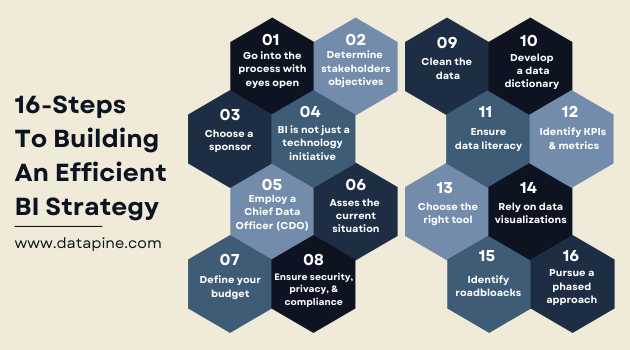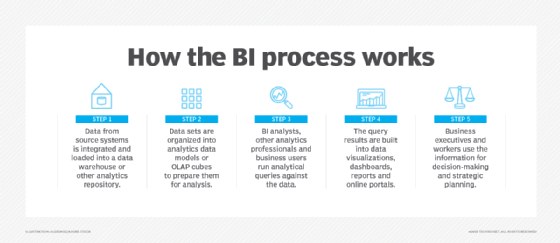

- #ASPECTS OF BUSINESS INTELLIGENCE STRATEGY HOW TO#
- #ASPECTS OF BUSINESS INTELLIGENCE STRATEGY SOFTWARE#
That may take some of the pressure off the selection and procurement process, he says, because “when everything in the market does reasonably well, you’re not risking a complete disaster.”īut when CIOs and procurement teams take shortcuts in the contracting process because of that, they can be left with a product that won’t meet business expectations. To some degree, BI tools have become commodity products, says Chris Herman, a senior analyst and contracting specialist with Swingtide, a management and IT consulting firm. Bring due diligence to the procurement process It’s about creating a data-centric culture, to be able to provide those insights back to the end users to tell that organization’s story,” says Steve Tycast, senior director of data and analytics at AIM Consulting. “It’s less about the technology and more about the business, the data they have, and how they interact with it. Such information will help identify what data stores the business will require for their BI needs, what kinds of interface might be most useful to the users, and what features and functions would best meet business needs.
#ASPECTS OF BUSINESS INTELLIGENCE STRATEGY HOW TO#
“Let the business describe what they want, and then can figure out how to deliver that.” “Spend enough time with the business to understand what their priorities are, what kind of insights and visualization they’re looking for,” he says.
#ASPECTS OF BUSINESS INTELLIGENCE STRATEGY SOFTWARE#
The CIO and the IT procurement staff should solicit the workers who will be using the software to understand what kind of questions they’re seeking to answer and how they want to receive answers to those questions. IT infrastructure requirements should not be the only requirement influencing BI tool selection, says Sri Manchala, CEO of Trianz, an IT service management company. Consider your business goals when selecting BI tools So when the organization sought out a new solution, “finding the best solution we could leverage with the existing infrastructure we had in place was top of mind for us.” 2. Jackson agrees, saying that the credit union once had a BI application that was difficult to scale and required hard-to-find specialized tech skills. That extra technology added unnecessary cost and complexity to the product, which could have been avoided by being more attentive to the existing infrastructure, the BI software available, the limitations of each and how those would impact deployment, she adds. Essentially, Fitzgerald says, “We had to build a tool on top of the tool they bought.” Rather, the company had to build integration tools to enable the flow of data. Consider your existing infrastructure when selecting a BI toolĪshley Fitzgerald, senior director for data science and analytics at Appnovation, a digital consultancy, once worked with a client who had purchased a multimillion-dollar BI package that couldn’t connect to the company databases, even via APIs. Here are 12 essential elements that can help overcome those challenges to create a successful BI strategy. Those findings show, and Jackson’s comments illustrate, that a successful BI program is about more than just technology. According to the survey, top 10 roadblocks to BI success include software-related issues, lack of adequate budget, lack of training and expertise, lack of strategy, unclear strategy goals, and lack of companywide adoption.


Yet business leaders also acknowledged challenges to their BI programs. Better supply chain management, increased employee satisfaction, and increased customer retention were the next three benefits cited. Survey respondents listed increased revenue, increased sales volume, improved customer service, increased productivity, and more new customers as the top five benefits they derived from their BI use.

It showed that 94% saw their company’s revenue increase post-implementation. And their BI investments are paying off, according to the survey data.


 0 kommentar(er)
0 kommentar(er)
